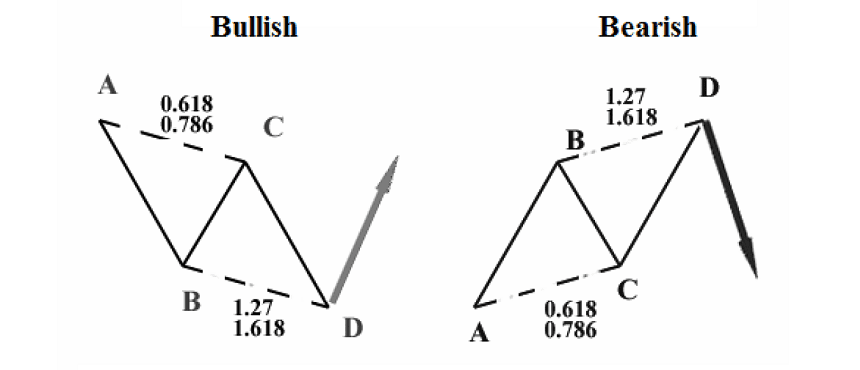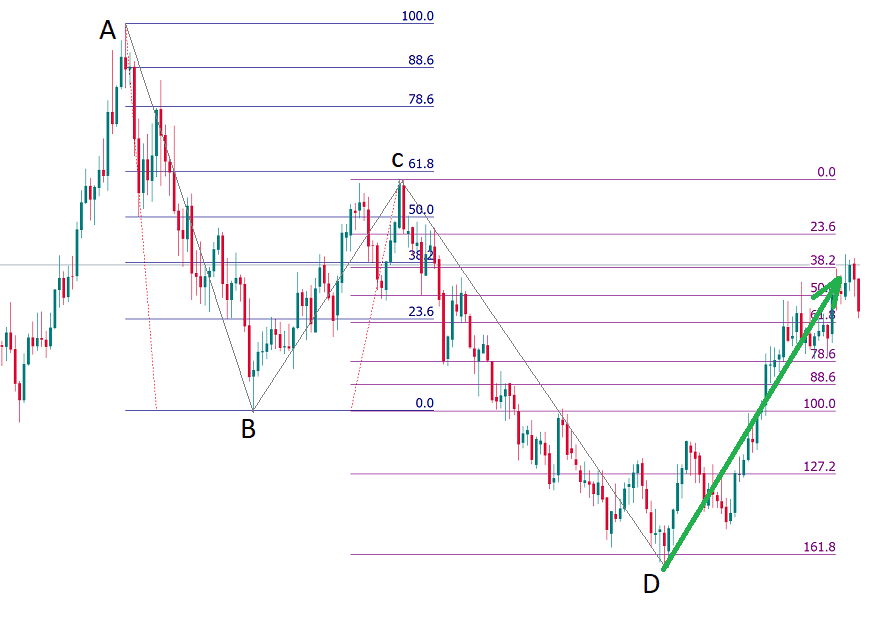Forex trading strategies for using the Harmonic ABCD pattern: Techniques for trading with the Harmonic ABCD pattern.
In the dynamic world of forex trading, traders are constantly on the lookout for patterns that can offer them a strategic edge. One such pattern that has gained significant attention is the Harmonic ABCD pattern. This geometric formation, derived from the works of H.M. Gartley, has the potential to enhance a trader's decision-making process and significantly improve their chances of success. In this article, we delve into the intricacies of the Harmonic ABCD pattern and explore techniques for effectively integrating it into forex trading strategies.
Table Content
I. Understanding the Harmonic ABCD Pattern: The Basics
1. Leg AB
2. Leg BC
3. Leg CD
4. Fibonacci Ratios
II. Trading Techniques with the Harmonic ABCD Pattern
1. Pattern Recognition and Confirmation
2. Wait for Confluence
3. Entry and Stop-Loss Placement
4. Risk-Reward Ratio
5. Trade Management
7. Market Conditions Matter
8. Patience and Discipline
III. Case Study: Applying the Harmonic ABCD Pattern
a. Pattern Identification
c. Entry and Stop-Loss
d. Risk-Reward Ratio
e. Trade Management
f. Outcome
IV. Footnote
Understanding the Harmonic ABCD Pattern: The Basics
The Harmonic ABCD pattern is a specific price structure that identifies potential turning points in the market. It is composed of four distinct legs, forming a distinct M or W shape on the price chart. The pattern is constructed by connecting the swing highs and swing lows with straight lines, ultimately forming a zigzag pattern.

1. Leg AB: The pattern begins with a significant price move, known as leg AB. This move can be either a rally (for a bullish pattern) or a decline (for a bearish pattern).
2. Leg BC: After the initial move, price retraces a portion of the leg AB to form leg BC. Ideally, leg BC retraces 38.2% to 61.8% of the length of leg AB. This retracement is crucial for determining potential entry points.
3. Leg CD: Following the retracement, price resumes its original direction and forms leg CD. This leg should ideally be equal in length to leg AB. The convergence of leg CD with the Fibonacci extension of leg BC completes the pattern.
4. Fibonacci Ratios: The Harmonic ABCD pattern relies heavily on Fibonacci ratios to determine the potential reversal points. The most commonly used ratios are 0.618 and 1.618, as well as their derivatives.

Trading Techniques with the Harmonic ABCD Pattern
While identifying the Harmonic ABCD pattern on a price chart is relatively straightforward, effectively integrating it into trading strategies requires a deep understanding of market dynamics and risk management. Here are some techniques for trading with the Harmonic ABCD pattern:
1. Pattern Recognition and Confirmation: The first step is to identify the pattern accurately. Traders must ensure that the swing highs and swing lows align appropriately to form the pattern. Utilizing technical indicators such as moving averages, RSI, or MACD can help confirm the validity of the pattern.
2. Wait for Confluence: The most successful traders do not rely solely on the Harmonic ABCD pattern. Instead, they wait for confluence with other technical factors. This could include support and resistance levels, trendlines, or candlestick patterns aligning with the potential reversal area identified by the pattern.
3. Entry and Stop-Loss Placement: Entry points are typically near the completion of leg CD. Traders can enter a trade when price action confirms a reversal at the projected reversal zone. Stop-loss orders should be placed beyond the completion of leg CD to protect against false signals.
4. Risk-Reward Ratio: Maintaining a favorable risk-reward ratio is crucial for long-term success. Traders should calculate potential gains against potential losses before entering a trade. The Harmonic ABCD pattern's Fibonacci ratios can assist in setting realistic profit targets.
5. Trade Management: As price progresses in the anticipated direction, traders should consider trailing their stop-loss orders to lock in profits. This allows them to capture more gains if the trend continues while protecting against sudden reversals.
6. Practice and Back testing: Before implementing the Harmonic ABCD pattern in live trading, thorough practice and back testing are essential. This helps traders gain confidence in their ability to identify the pattern accurately and make informed decisions.
7. Market Conditions Matter: While the Harmonic ABCD pattern can be a powerful tool, it's important to note that no strategy is foolproof. Market conditions, news events, and other external factors can impact price movement. Traders should exercise caution and adjust their strategies accordingly.
8. Patience and Discipline: Successful trading requires patience and discipline. Not every potential Harmonic ABCD pattern will result in a profitable trade. Traders should avoid overtrading and adhere to their strategy with consistency.
Case Study: Applying the Harmonic ABCD Pattern
Let's consider a hypothetical scenario to illustrate how the Harmonic ABCD pattern can be applied:
a. Pattern Identification: A trader identifies a potential bullish Harmonic ABCD pattern on the EUR/USD daily chart.
b. Confluence: The potential reversal zone identified by the pattern aligns with a major support level and an oversold reading on the RSI indicator.
c. Entry and Stop-Loss: The trader enters a long position as price confirms a reversal at the projected reversal zone. The stop-loss order is placed below the completion of leg CD.
d. Risk-Reward Ratio: The trader calculates a risk-reward ratio of 1:2, setting a profit target at twice the distance of the stop-loss.
e. Trade Management: As price moves in the anticipated direction, the trader adjusts the stop-loss order to lock in profits, trailing it along with the trend.
f. Outcome: The trade reaches the profit target, resulting in a successful trade.
Footnote:
The Harmonic ABCD pattern is a powerful tool that can enhance a trader's decision-making process when utilized in combination with other technical and fundamental analysis methods. However, like any trading strategy, it comes with inherent risks. Traders should exercise caution, practice effective risk management, and continuously refine their skills through practice and education. By understanding the nuances of the Harmonic ABCD pattern and integrating it into a well-rounded trading strategy, traders can potentially improve their chances of success in the competitive world of forex trading.











Discussion